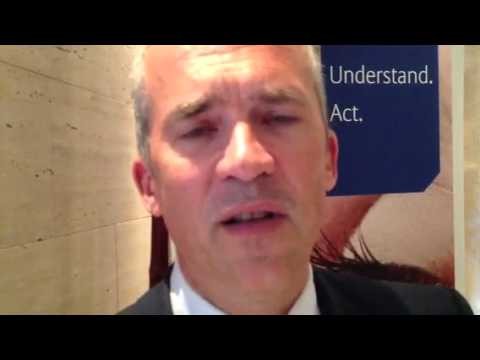Bond giant PIMCO wins fourth Lipper award for stocks
Post on: 30 Июнь, 2015 No Comment

Pacific Investment Management (PIMCO) founder and co-chief investment officer Bill Gross plays golf on the first hole at Pebble Beach Golf Links before the start of the AT&T Pebble Beach Pro-Am in Pebble Beach, California, February 8, 2012.
Analysis & Opinion
n>(Reuters) — Bill Gross, the manager of the world’s largest bond fund and so-called bond king, can claim another crown.
For the fourth straight year, Gross’s Pacific Investment Management Company, which oversees $2 trillion in assets, has nabbed Lipper’s best large-company equities award, Thomson Reuters Corp’s Lipper fund unit announced on Thursday.
Their process is incredible, bonds or equities, said Joshua Brown, vice president of investments at Fusion Analytics and an influential blogger on www.thereformedbroker.com. It is a dedication to cooperative internal research and problem-solving.
Dan Fuss, vice chairman and portfolio manager at the $186 billion Loomis Sayles Bond Fund, another well-regarded bond investor, said about Gross and PIMCO’s equity recognition: They’ve earned it.
The funds that earned PIMCO the Lipper Fund Award for large equity management include the PIMCO RealEstateRealReturn Strategy Fund, the PIMCO CommodityRealReturn Strategy Fund, the PIMCO Fundamental Advantage Total Return Strategy Fund, the PIMCO StocksPlus TR Short Strategy Fund, the PIMCO StocksPLUS Total Return Fund, the PIMCO International StocksPlus Total Return Strategy U.S. dollar-hedged Fund and the PIMCO EM Fundamental IndexPlus Total Return Fund.
On a risk-adjusted basis, PIMCO’s equity funds easily surpassed their group average, a major factor for which the Newport, California-based firm garnered its top status, said Tom Roseen, head of research services at Lipper. Nine qualifying PIMCO equity funds had at least three years of performance, which is a criterion used in Lipper’s calculations.
They are exposed (to) the same manner of risk as any long-only fund, but they have been able to mitigate losses in down periods better than their competitors, Roseen added.
That said, the strategy behind most of PIMCO’s funds does not fit the traditional image of a fund manager poring over balance sheets to make picks. Instead, PIMCO uses synthetic equities, or derivatives, which can be used to deliver the performance of the broader stock market.
They have the ability to reap some of the interest and some of the yield from having a part of that portfolio in fixed-income securities, which PIMCO is best known for, Roseen added.
Because futures and swaps typically require modest capital, the StocksPLUS Total Return strategy, for instance, uses the remaining cash in an actively managed low- to intermediate-duration core bond portfolio.
The StocksPLUS Total Return Fund’s risk-adjusted returns were 8.53 percent for the three years ended November 2012 versus the group’s large-cap core fund average of -0.2375 percent for the same period.
Roseen points to another stand-out performer, PIMCO’s RealEstateRealReturn Strategy Fund, which posted risk-adjusted returns of about 13.8 percent for the three years ended November 2012 versus its group average, which lost 0.37 percent.
PIMCO’s equity funds are not considered passive strategies. They make bets on names and sectors, Roseen said.
Sabrina Callin, who currently oversees PIMCO’s enhanced equity index and unconstrained bond suite of products, told Reuters the StocksPlus strategies are successful because of the firm’s innovative solutions such as using S&P 500 futures contracts, which were introduced in 1982.
I think Bill Gross and the team here at PIMCO saw a really interesting opportunity to achieve something that investors need in a different way, but a way that should work and has worked quite well for investors over time, Callin said.
‘$40 BILLION IS NOT INSIGNIFICANT’
PIMCO’s equity department has not been without hurdles, however. PIMCO rolled out several new funds during a time when investors were still souring on stocks, despite the Federal Reserve’s efforts to push investors out the risk curve.
Neel Kashkari, who was tapped in 2009 to turn PIMCO into a big player in equities, launched its first actively managed equity mutual fund, the PIMCO EqS Pathfinder Fund, in April 2010 amid a global market swoon that extended into the next year with high levels of volatility.
At the time, Kashkari emphasized to Reuters that the fund was not a short-term call on the stock market.
This is a long-term strategic move for the firm, he said.
The $2 billion Pathfinder, the firm’s largest stock fund which invests primarily in global stocks with a deep-value bias, posted returns of 9.53 percent last year, trailing its peers whose average return was 15.84 percent, according to Morningstar Inc data.

The Pathfinder did well in 2011’s tough environment, losing only 3.85 percent, against the average global equity fund that suffered 7.93 percent decline for the same period, illustrating the fund’s focus on managing downside protection.
For its part, the $592 million Eqs Emerging Markets Fund, launched in March 2011 and also of a defensive nature, returned 12.84 percent last year compared with 18.15 percent for its peer category.
Both funds were not counted in the Lipper calculation because they do not have three-year track records, Roseen said.
All told, PIMCO’s equity funds have attracted over $14.55 billion in net new cash between 2010 and 2012, according to Morningstar.
In January, Kashkari told The Wall Street Journal he was leaving the firm to consider running for public office in California.
Marc Seidner, who is interim head of global equities until a successor is named, said that, while PIMCO is best known for its bond expertise, the firm does have growing representation in equity-oriented strategies.
The numbers are something in the neighborhood of $40 billion, so it is not insignificant, Seidner said. We’re known historically as a big bond firm, but I think the direction for us is certainly toward a much more balanced platform.
Indeed, PIMCO and other big U.S. bond firms, including DoubleLine Capital LP and Loomis Sayles are making aggressive pushes into the $5.17 trillion equity market business as the bull market in fixed income appears to be coming to an end and in anticipation of growing retail investor interest in stock funds.
After five years of monstrous cash inflows into fixed-income markets, these bond firms are strategically targeting a bigger share of equities, an area that many investors shunned in recent years. Between 2008 and 2012, investors pulled a net $409.6 billion from U.S. equity mutual funds.
PIMCO’s equity investment strategies include deep-value, emerging markets, dividend and income and long-short strategies.
Even in a financially repressed world, we recognize that there is still a need for income, particularly as populations continue to age and demographics age, Seidner said. So providing an equity-oriented solution that has an income component to it to us is a very valuable strategy.
(Reporting By Jennifer Ablan.; Editing by Lauren Young. Editing by Andre Grenon)














